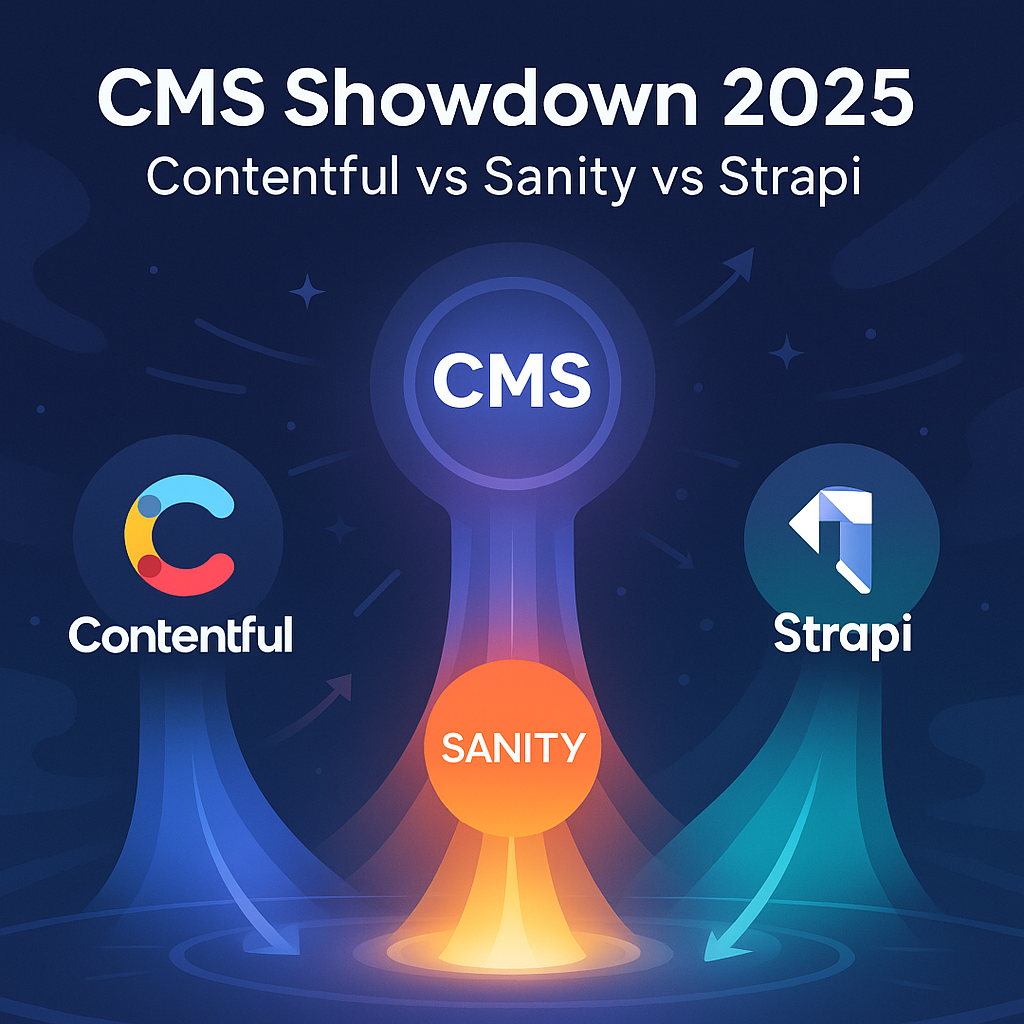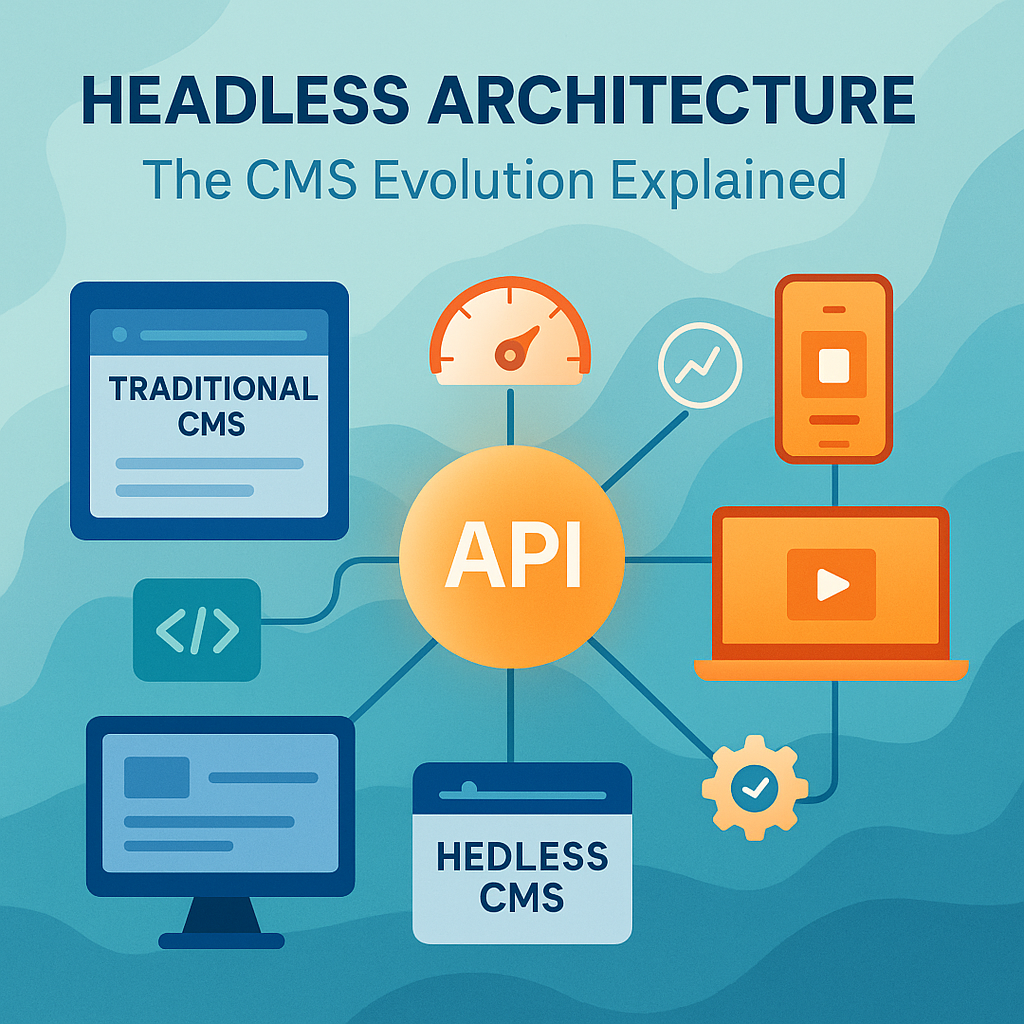The terms "headless" and "API-first" get tossed around like they mean the same thing. They don’t. And understanding the difference could determine whether your next website scales beautifully or collapses under a mountain of complexity.
Here’s a story we see too often: A business gets sold on going “headless” because it sounds modern, flexible, and fast. Six months later, they’re stuck with integration headaches, slow developer workflows, and a CMS that’s technically headless but functionally handcuffed. Why? Because not all headless CMSs are truly API-first, and that distinction matters more than most people realize.
We’ve built projects on both architectures. We’ve seen teams struggle with retrofitted APIs that barely work, and we’ve watched others fly with true API-first systems. The difference isn’t just technical; it’s about how your entire digital ecosystem functions, grows, and adapts.
In this article, we’ll break down what “API-first” really means, how it differs from a traditional headless CMS, and when you should invest in one over the other. No buzzword bingo, just clear explanations you can actually use to make decisions.
Headless vs. API-First: Similar Words, Different Foundations
Let's start with definitions, because the marketing departments at CMS companies have muddied these waters considerably.
A headless CMS is any content management system that separates the backend content storage from the frontend presentation. Instead of templates and themes living inside the CMS, content gets delivered through APIs to whatever frontend you choose. WordPress with its REST API enabled? Technically headless. Drupal serving JSON? Also headless. We dive deeper into the pros and cons in our guide to headless architecture.
An API-first CMS goes deeper. Here, every single function—from content creation to user management to asset handling—is designed to be accessed and managed via API from day one. The API isn’t bolted on after the fact; it’s the foundation everything else is built on.
Think of it this way: A headless CMS gives you a steering wheel detached from the car. You can connect it to different vehicles, but you’re still working within the constraints of that steering wheel’s design. An API-first CMS lets you build the entire car however you want, with the API as your universal toolkit.
Concept | Headless CMS | API-First CMS |
Core Design | Decoupled frontend/backend | Built around APIs from day one |
Data Access | Via REST/GraphQL endpoints | API-driven for every operation |
Flexibility | High | Maximum |
Example Platforms | WordPress (REST API), Drupal, Storyblok | Contentful, Sanity, Strapi, Hygraph |
API Coverage | Often partial | Always complete |
Legacy Constraints | Usually present | None |
The distinction might seem academic, but it has massive practical implications. Let’s dig into why.
APIs as the Core, Not the Add-On
When a CMS is truly API-first, everything changes. Content modeling, permissions, workflows, delivery, even the admin interface itself—they're all just clients of the API. This isn’t just a technical nicety; it’s a fundamental shift in how the system works.
Consider what this means for development. Want to create a custom editorial interface for your content team? With an API-first system, you build it using the same APIs the default interface uses. Need to integrate with your inventory management system? The API handles it. Want to trigger complex workflows when content changes? The API supports it.
Our web design teams love this approach because it means zero compromises. They can build exactly the experience they envision without fighting against CMS limitations. The frontend becomes truly independent, pulling data from the CMS API just like it might pull from a weather API or payment gateway.
Performance improves too. API-first systems are optimized for API delivery from the ground up. They're built to handle thousands of concurrent API requests, with caching strategies designed for headless consumption. Response times are measured in milliseconds, not seconds.
As the team at Hygraph puts it: "API-first means your CMS is an ecosystem, not a silo." [4] This is more than marketing speak. When every feature is API-accessible, your CMS becomes a content platform that plays nicely with everything else in your stack.
The numbers back this up. According to Postman’s State of the API Report 2025, API-first adoption among enterprise teams is up 45% year-over-year. [1] Companies are realizing that APIs aren’t just for content delivery; they’re for content operations at every level.
But here’s what really matters: developer happiness. When developers work with true API-first systems, they spend time building features, not working around limitations. Documentation actually matches reality. Error messages make sense. Rate limits are reasonable. These things matter when you’re trying to ship products, not debug infrastructure.
The Hidden Bottleneck in Some “Headless” Systems
Now for the uncomfortable truth: many CMSs claiming to be headless are really just traditional systems with APIs tacked on. And those APIs? They’re often afterthoughts, incomplete, or poorly designed.
WordPress is the perfect example. Its REST API, introduced in 2015, technically makes it headless-capable. But dig deeper, and you’ll find problems. Custom fields require additional plugins to expose via API. Some core functions still aren’t accessible through REST endpoints. Performance degrades quickly under load because the system wasn’t built for API-first delivery. For a deeper dive, check out our comparison of monolithic vs. headless CMS architectures.
We’ve worked with clients who chose WordPress as their “headless” solution, only to discover these limitations mid-project. Suddenly, simple requirements become complex workarounds. That dynamic filtering you wanted? Not possible through the API. Those custom post relationships? Good luck accessing them efficiently.
Drupal faces similar challenges. While its JSON:API module is more comprehensive than WordPress’s REST API, it’s still retrofitted onto an architecture designed for server-side rendering. The result? Inconsistent performance, complex configuration, and APIs that feel more like translations than native interfaces.
These aren’t bad platforms; they’re just not API-first. They’re trying to serve two masters: their legacy architecture and modern headless demands. Something always gets compromised.
Factor | Retro-Headless CMS (API Added Later) | True API-First CMS |
API Coverage | Partial | Full |
Query Flexibility | Limited | Complete |
Performance | Variable | Consistently fast |
Developer Experience | Legacy-dependent | Modern workflow |
Data Modeling | Pre-set structures | Fully custom schemas |
Caching Strategy | Page-based | API-optimized |
Real-time Updates | Difficult | Native |
The performance difference is striking. A true API-first CMS like Contentful or Sanity can serve complex, nested queries in under 50ms. A retrofitted system might take 500ms or more for the same query, and that’s before you add any custom logic.
More importantly, these limitations compound. Each workaround adds technical debt. Each compromise makes the next feature harder to build. Eventually, you’re spending more time fighting the CMS than using it.
Choosing Between Power and Simplicity
So should everyone just go API-first? Not necessarily. Both approaches have their place, depending on your needs, resources, and goals.
When Headless (Not API-First) Makes Sense
Traditional headless CMSs work well for teams transitioning from monolithic systems. If you’re running WordPress today and want to experiment with headless architecture, using WordPress’s REST API is a logical first step. You keep familiar workflows while gaining some decoupling benefits.
These systems also excel when you need a hybrid approach. Maybe most of your site runs traditionally, but you want to pull content into a mobile app. A retrofitted headless CMS handles this without requiring a complete architectural overhaul.
Our content marketing clients often prefer traditional headless when they need robust editorial tools. WordPress’s Gutenberg editor or Drupal’s Layout Builder offer sophisticated content creation experiences that many API-first systems can’t match out of the box.
Cost is another factor. Setting up WordPress with a REST API costs less initially than implementing Contentful or Sanity. For small businesses testing headless waters, this lower barrier to entry matters.
When API-First Becomes Essential
But when you’re building something ambitious, API-first isn’t optional. Multi-platform content delivery, real-time applications, and personalization engines demand the flexibility only a true API-first architecture provides.
Large ecosystems particularly benefit from API-first approaches. When your content needs to flow seamlessly between websites, apps, smart displays, and voice assistants, you need APIs that were designed for this from the start. Retrofitted solutions crack under this pressure.
Performance-critical applications also demand API-first architecture. If you’re building a news platform serving millions of requests daily, those milliseconds matter. API-first systems are optimized for exactly this use case.
We recently helped a retail client migrate from WordPress (headless) to Sanity (API-first). Page load times dropped 60%. Development velocity doubled. Most importantly, they could finally build the personalized shopping experiences they’d been dreaming about but couldn’t implement with their previous setup.
Type | Best For | Key Benefit | Biggest Drawback |
Traditional Headless | Small/medium teams, hybrid setups | Simpler transition, familiar tools | Limited API depth |
API-First | Enterprises, apps, multi-platform | Total flexibility, blazing performance | Higher cost, requires dev resources |
The Bottom Line: Architecture Defines Possibility
If headless CMS separated the front and back ends, API-first redefines how they connect and how fast they can evolve. This isn’t just technical architecture; it’s about business capability.
Traditional headless works when you need some decoupling without completely rebuilding your content infrastructure. It’s the practical choice for many organizations, especially those with existing CMS investments.
API-first is the choice when you’re building for the future—when content needs to flow everywhere, adapt instantly, and integrate with everything. It’s more complex and more expensive, but ultimately, it’s more capable.
We’ve built successful projects with both approaches. The key is understanding what you’re trading off. Traditional headless trades some flexibility for familiarity. API-first trades simplicity for power.
As the boundaries between websites, apps, and digital experiences continue to blur, API-first architecture becomes increasingly important. Not because it’s trendy, but because it’s designed for how modern digital systems actually work: as interconnected services sharing data through APIs.
The choice isn’t really about headless versus API-first. It’s about whether you’re optimizing for today’s needs or tomorrow’s possibilities.
Want help choosing the right architecture for your next project? Href Creative helps businesses navigate headless, API-first, and hybrid models that make sense for their goals. Whether you’re exploring modern CMS options or planning a complete digital transformation, we’ll help you build on the right foundation.
References
[1] Postman State of the API Report 2025: https://www.postman.com/state-of-api/
[2] Gartner — Composable Digital Experience Platforms Forecast 2025: https://www.gartner.com/
[3] Sanity Blog — Headless vs API-First Explained (2025): https://www.sanity.io/blog/
[4] Hygraph — API-First CMS Advantages: https://hygraph.com/
[5] Contentful — The Role of APIs in Modern Content Infrastructure: https://www.contentful.com/

